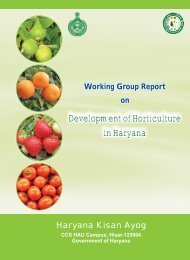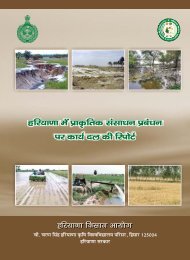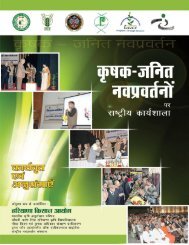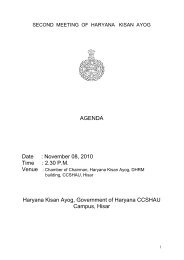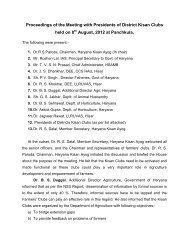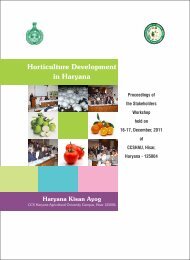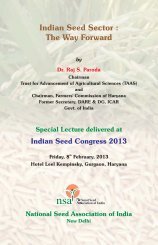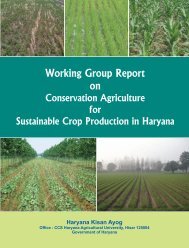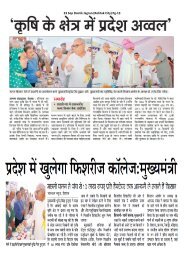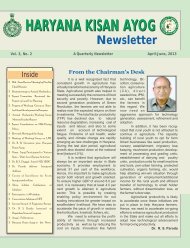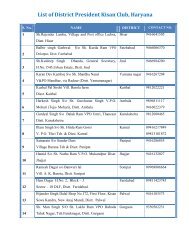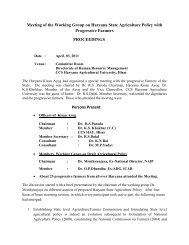Working Group Report on - Haryana Kisan Ayog
Working Group Report on - Haryana Kisan Ayog
Working Group Report on - Haryana Kisan Ayog
- No tags were found...
You also want an ePaper? Increase the reach of your titles
YUMPU automatically turns print PDFs into web optimized ePapers that Google loves.
slowly restoring the aquatic biodiversity. Gradually these resources shall be helpedto become source of quality brood stock and fish seed supply in the State.Pen culture and cage culture programs for seed rearing can be taken up in the lakes,even riverine and canal resources. Unobtrusive and n<strong>on</strong>-c<strong>on</strong>sumptive runningwater aquaculture systems for utilizing the extensive canal networks for fish cultureshall be put in place. High intensity cage culture systems may be another opti<strong>on</strong> incanal systems.3.3. Diversificati<strong>on</strong> and Intensificati<strong>on</strong> in P<strong>on</strong>d ResourcesComm<strong>on</strong> property village p<strong>on</strong>ds and privately owned farm p<strong>on</strong>ds shall diversify thecandidate culture species in the coming years in order to ensure c<strong>on</strong>tinuedec<strong>on</strong>omic profitability and ecological viability. In additi<strong>on</strong> to the Indian majorCarps, potential new species like Pangasianod<strong>on</strong>, Scampi, and Indian Magur beadded to the basket. Simultaneously, the culture systems shall become moreintensified especially in the privately owned p<strong>on</strong>ds in order to maximize the yield /returns from unit area. Multiple stocking and multiple harvesting, stocking of stuntedfingerlings, feed based culture in village p<strong>on</strong>ds, introducti<strong>on</strong> of re-circulatoryaquaculture systems, polyculture are ways of intensificati<strong>on</strong>. These are discussed insome detail in the next Chapter.3.4. Sustainable Aquaculture in Waterlogged and Salt affected AreasThe overall approach in the ecologically sensitive new resources shall be l<strong>on</strong>g termresource sustainability and optimal ec<strong>on</strong>omic returns as against short termmaximizati<strong>on</strong> of m<strong>on</strong>etary gains at the cost of ecosystem collapse. As thetechnologies for culture of high value candidate species like Tiger Shrimp, White legshrimp, Sea bass and Scampi are very promising, their field dem<strong>on</strong>strati<strong>on</strong> andlarge scale adopti<strong>on</strong> by farmers shall be d<strong>on</strong>e following a missi<strong>on</strong> mode approachwherein provisi<strong>on</strong>s for seed supply, feed supply, credit support, c<strong>on</strong>tinued technicalsupport, market support and training shall be bundled and their delivery effective.3.5. Self-sufficiency in Quality Seed Producti<strong>on</strong>The most critical input for achieving the target producti<strong>on</strong> is timely availability ofadequate and quality seed of required candidate species at an affordable price. The( 32 )



